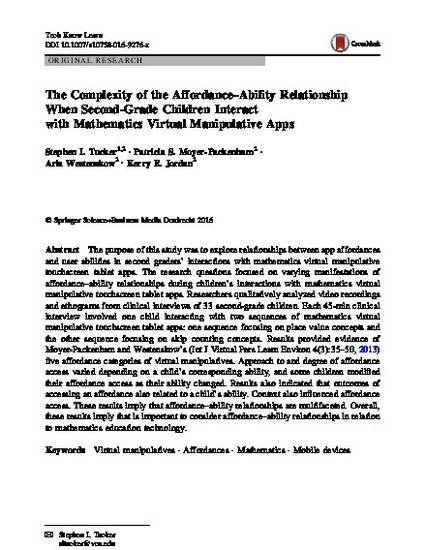
The purpose of this study was to explore relationships between app affordances and user abilities in second graders’ interactions with mathematics virtual manipulative touchscreen tablet apps. The research questions focused on varying manifestations of affordance–ability relationships during children’s interactions with mathematics virtual manipulative touchscreen tablet apps. Researchers qualitatively analyzed video recordings and ethograms from clinical interviews of 33 second-grade children. Each 45-min clinical interview involved one child interacting with two sequences of mathematics virtual manipulative touchscreen tablet apps: one sequence focusing on place value concepts and the other sequence focusing on skip counting concepts. Results provided evidence of Moyer-Packenham and Westenskow’s (Int J Virtual Pers Learn Environ 4(3):35–50, 2013) five affordance categories of virtual manipulatives. Approach to and degree of affordance access varied depending on a child’s corresponding ability, and some children modified their affordance access as their ability changed. Results also indicated that outcomes of accessing an affordance also related to a child’s ability. Context also influenced affordance access. These results imply that affordance–ability relationships are multifaceted. Overall, these results imply that is important to consider affordance–ability relationships in relation to mathematics education technology.
